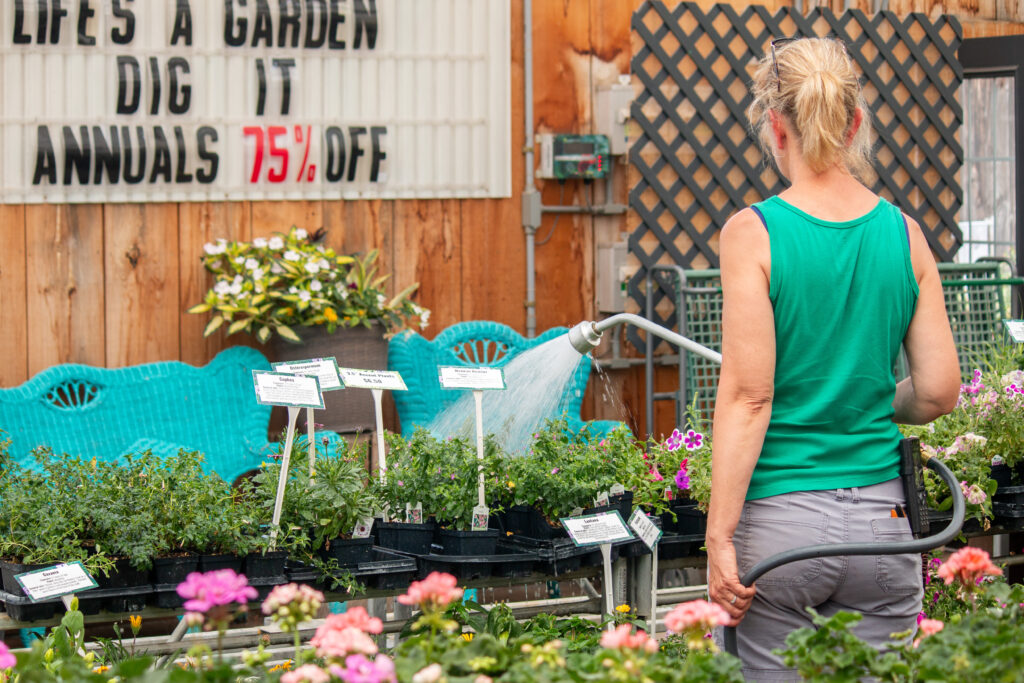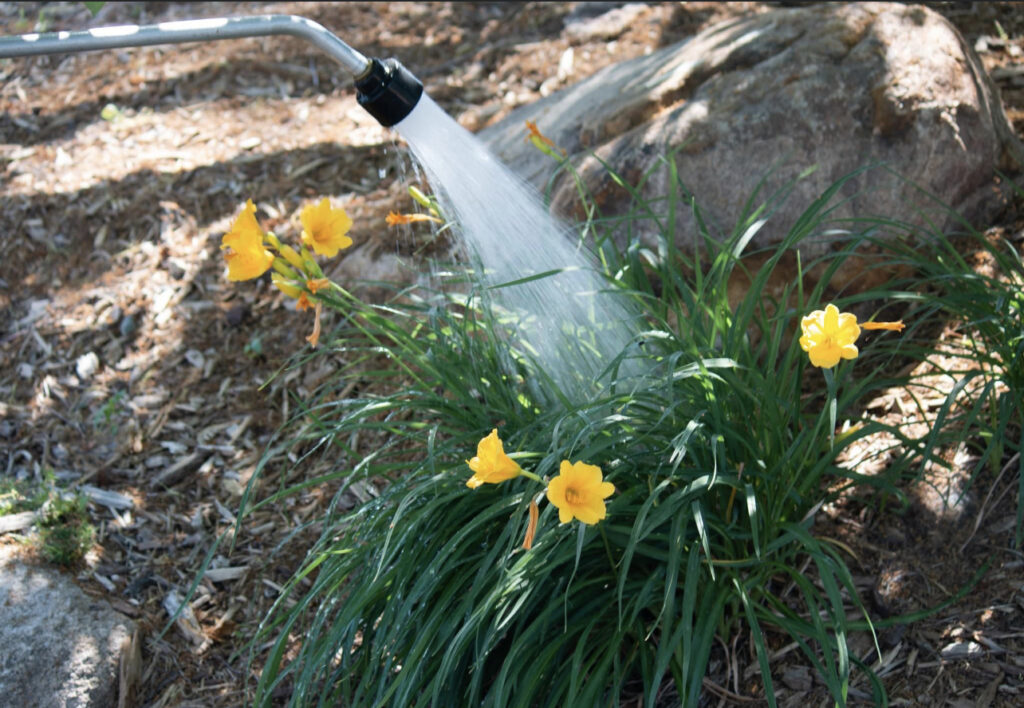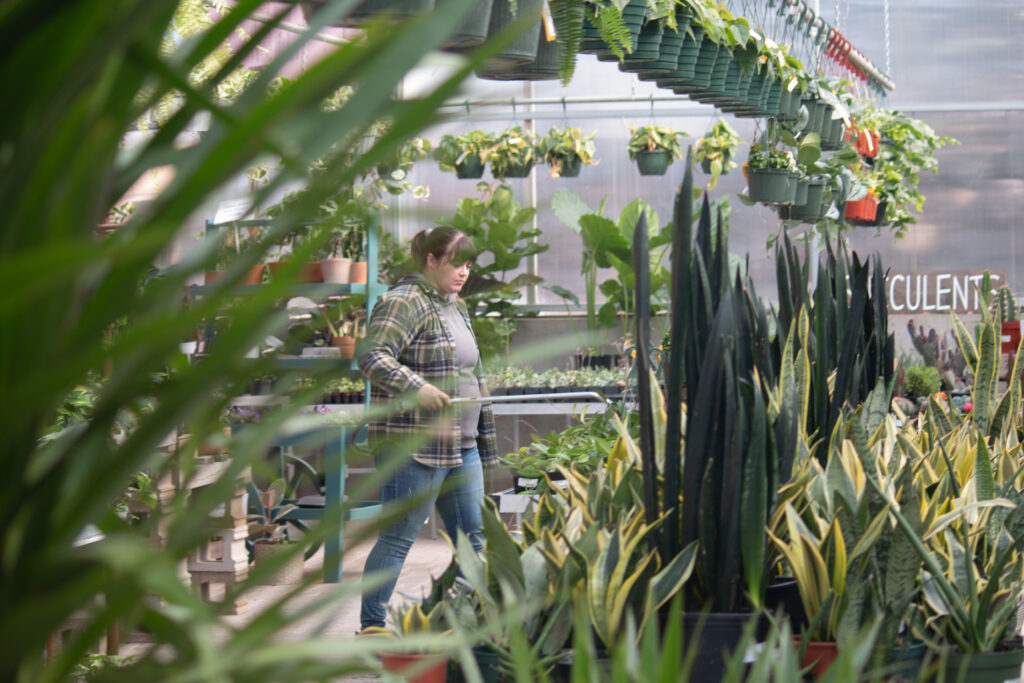About Watering
Every plant requires three things air, soil, and, most of all, water. Proper watering is the key to healthy and beautiful plants as homeowners lose far more plants to overwatering than for any other reason. Overwatered plants are unable to uptake oxygen through their roots and are susceptible to issues such as root rot that, if severe, can cause death of the plant. Underwatered plants, however, are unable to absorb nutrients and water leading to wilting and eventually death.

How Much Water
Many factors play a role in how much water each specific plant needs. These factors include, but are not limited to: plant variety, temperature, humidity, wind, soil type, and soil condition. It is important to always check your soil before grabbing your hose or watering can. If the soil is still wet, wait to water until the soil is dry. We recommend digging down a few inches into the soil to check the moisture level. Sometimes the top of the soil may be dry but when you dig down a few inches, where your plant’s root system is, the soil may still be wet.
Below are our general watering guidelines for newly installed plants:
- Trees: Once every two weeks, five to seven gallons of water
- Shrubs: Once a week, three to five gallons of water
- Perennials: Once a week initially, one gallon of water
- Annuals: Once per day or every other day depending on the size of the planter.

Sprinkler Systems
Homeowners are under a mistaken assumption that their lawn needs frequent watering to maintain a healthy green color. Ideally, industry experts recommend running a sprinkler only once or twice a week. Watering your lawn frequently leads to a lawn with a shallow, weak root system since the roots don’t have to go searching for water. This leads to your lawn becoming dependent on a consistent water supply and causes your lawn to be susceptible to browning and dying during hot, dry conditions. If you have sprinklers that hit your landscaping plants, make sure to check your soil before doing any additional watering.
Watering Tips
- A good deep watering less often is better than watering a little every day. It is suggested to begin deep watering early on with new plants. Plants that have frequent, shallow watering tend to develop a more shallow and weak root system compared to plants that have less frequent, deeper watering. Plants with strong, extensive root systems are better able to handle stress and drought conditions.
- Always test the soil before you water. Some plants can look droopy because of the heat, and not necessarily because they are dry. Make sure the soil is dry before watering.
- It is better to err on the side of keeping your soil too dry rather than too wet. The soil needs to dry out between watering for plants to be able to absorb oxygen and live. Consistently wet soil can lead to issues with root rot and other diseases that can eventually kill your plants.
- If it rains more than one inch, there is no need to water. Count the rain as your watering day and start your watering cycle over.
- Water plants at the base not over the top. Watering on top of the leaves can promote fungus and other leaf diseases. Also, putting super cold water on leaves when it is how outside can damage your plants.
- The best time of day to water is in the morning. If you can, water your plants in the morning. That way, they have time to soak up the water before the heat of the day. This also allows them to not stay wet overnight, which can lead to fungus and disease problems.
- Some plants need more water than others. Become familiar with your landscape and learn which plants need water more often than others.


